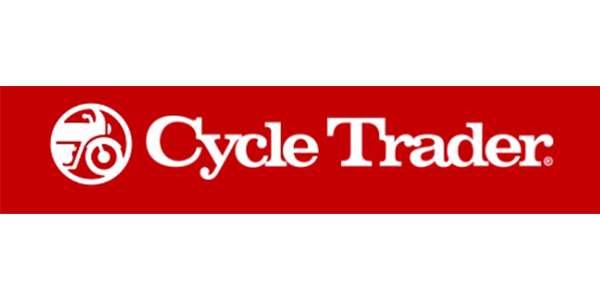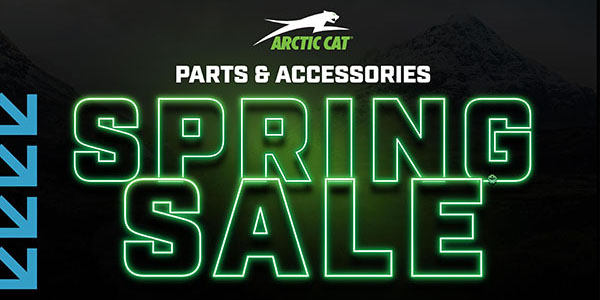 The 2012 models have surely started rolling into your showroom, and it’s nearly time to close the book on 2011. As you prepare to embark on the 2012 selling season, let’s take a look back on some of the top tips and quips we’ve shared in the Best Operators Club this year.
The 2012 models have surely started rolling into your showroom, and it’s nearly time to close the book on 2011. As you prepare to embark on the 2012 selling season, let’s take a look back on some of the top tips and quips we’ve shared in the Best Operators Club this year.
New Unit Sales Secret Weapon
An inexpensive door swing counter can provide a multitude of information about your business. It allows you to track the response to your traffic-building advertising. It also allows you to track the effects of seasonality and weather situations. Cost per door swing not only helps you visualize what it takes to get customers in the door, it can help guide advertising and promotion decisions. If you don’t have them already, install a door swing counter at every entrance. Yes, you will have a lot of kids who run in and out, and your staff goes in and out of the store all day. This averages out over time. Don’t fret about it — just install the counters and start tracking the numbers.
From the sales department’s perspective, these devices enable you to measure the sales staff’s use of the traffic log as a percent of door swings. Write-ups and closes can also be measured as a percent of door swings. This can tell you something about the seriousness of the shoppers you are getting. For example, you may start seeing less lookers and more buyers per door swing. This may affect some of your sales staff incentives or promotion strategies.
Pre-Owned Profits
If you follow this column, you’ve read my ranting about making a commitment to get involved in the pre-owned business. Hopefully, you’ve seen the actual dealer data and recognized the significance of the difference in gross profit margin (and net profits) as compared with new unit sales.
Over and above the margin advantages, there are numerous reasons to get involved in the pre-owed business. If you don’t currently sell pre-owned units, consider the following:
• It is like having another OE supplier, but without order requirements, inventory obligations and training commitments.
• You have control over your gross profit margins.
• Every pre-owned unit is unique, so you rarely compete with other dealers.
• Offering to take trade-ins increases your new unit sales.
• Pre-owned inventory creates additional price points and model selections. This opens new markets and attracts new customers.
• Some of these customers will convert into new unit purchasers or trade-up to new units later.
• Pre-owned unit customers frequently purchase add-on accessories, F&I products, parts and service. just like new unit buyers.
• Reconditioning these units generates additional parts and service business.
Optimize Your Parts, Clothing & Accessories Department Operations
Many dealers feel the operation of the parts, clothing and accessories (PC&A) department is a no-brainer. Stock some parts and accessories, set up a counter, open your doors, and customers will buy the stuff. In reality, this many-faceted department represents the highest gross margin potential in your dealership. When operated properly, the profit from this department can absorb the majority of the overhead for the entire dealership. This is critical when unit sales are down, and it makes a huge difference to the bottom line when sales are up.
The budget is a very important factor in department operations. Within the department budget is the inventory budget or “open-to-buy” system. This controls the dollar amount available for stocking inventory. At its simplest, it has separate dollar amounts for the categories of hard parts, clothing (or apparel) and accessories. The process is pretty simple: if there are no dollars available (open-to-buy), something has to be sold before something else can be ordered.
Reduce and control obsolescence by running the following reports on a monthly basis: slow movers (no sale for six months – accounting for seasonality) and non-movers (no sale for 12 months). Non-seasonal slow movers should be reduced; non-movers should be eliminated from your inventory as quickly as possible. Send them back to the supplier, put them on sale at drastically reduced prices, sell them on the Internet, donate them to a charity (clothing) or a tech school (parts and some accessories) or drop them in the dumpster. If you take a write-down on this inventory but keep it, you must put it back in inventory to sell it. The goal is to keep obsolescence below 10 percent.
Merchandising Best Practices
• Track the number of turns per display and ROI per square foot to locate sales hot spots. Utilize them to increase sales of selected merchandise.
• Develop plan-o-grams for locating displays and create planning checklists to determine their contents.
• Use current styles of displays, keep them clean and in good condition, and change the product and locations often.
• Focus on the two major interest points of most shoppers: What’s new, and what’s on sale.
• Create special sale areas that are visible from the front entrance, well-displayed and have high-quality signs.
• Seasonal theme and lifestyle displays are an important part of creating visualization for the customer
• There should be well-made promotional signage placed at eye-level throughout the store.
• Cooperative promotions with other departments can be very effective. For example, “Free installation with tire purchase.”
In addition to employing these merchandising best practices, it is imperative that all of the staff in your dealership have basic sales training — well merchandised product still won’t sell itself! Your team needs to know how to properly greet, interview and satisfy a customer — even if they are looking for another department.
Counter and clothing/accessories staff need advanced sales training including telephone skills. Establish baselines for sales per employee and watch the numbers improve following the training. It works!
Utilize someone with effective writing skills to respond to email inquiries — timing is critical here. You must respond very quickly or risk losing customers!
Boost F&I Profits
We call F&I “found income” because of the department’s potential for producing gross profit. Selling F&I products has little cost of sales, so it is almost pure profit. This is often referred to as “back-end” profit because it does not come directly from the unit sale, but is added on after the unit sale is closed.
There are some key ingredients you must bring together to have a successful F&I department in your dealership. First, your store culture needs to have a good attitude regarding F&I products. If they don’t believe in it, they won’t support your efforts in selling it. I can still remember a salesperson telling a customer; “Our F&I Manager will try to sell you some stuff, but you don’t really need it…” Do you suppose that customer bought hundreds of dollars in F&I products? Your entire store team needs to be educated on the benefits of the products.
Next, you need to have a well-trained person with a good attitude who possesses the proper aptitude for this position. Training is useless unless they have the right characteristics. What I’m talking about here is a somewhat rare person who is personable, has low-key selling skills and the ability to organize and follow through on paperwork. In general, good front-end salespeople are not the best at organization and paperwork (surprise). However, there are some who can become excellent F&I people.
You need to acquire all the F&I products available to you. If you need to get an insurance license to sell some of the key products in your state, do it. It’s generally not difficult to pass the required test, and it will be worth it in the long run. You want to be a one-stop shop when it comes to F&I products. You need to be able to finance the product, insure it and protect the customer’s investment.
Financing is a key ingredient here. If you can’t finance it, you can’t sell much in the way of F&I products. They go hand-in-hand. In many cases, you must take the time to develop a good lender presentation that you can take to local banks and credit unions. You need to convince them that they want to buy your paper. Once you have secured multiple lending sources, you need to maintain these relationships or risk losing them. A good F&I person can handle all of this for you.
Once you have the lenders, your F&I person needs to focus on conversions. This is the process of taking cash, bank and credit union customers and converting them to dealership financing. Again, a good F&I training program is essential to developing these skills.
Service Sells
Service has been a tough area for most dealers when it comes to making a profit. Sometimes, it’s like herding cats — it seems to have a mind of its own and doesn’t always respond well to direction. Some dealers think of it as a “necessary evil” and want to farm it out to someone else. Other dealers swear it’s impossible to make a profit in this department.
Statistics and surveys prove that service is a key ingredient to growing your sales operation and retaining your existing customers. In fact, the last customer survey I read reported that the service department was the No. 1 reason customers either did or did not buy again from the same dealership. When you take into account the average customer buys around seven units during their powersports life-cycle, this is huge. It’s much more cost-effective to retain your existing customer than it is to earn a new one.
This also creates a somewhat intangible asset value for the service department. While it may not look terribly profitable (if at all) on the surface, how much would it cost you in lost unit sales, F&I sales and P&A sales if it wasn’t there to support your customers?
That said, a service department can be a true profit center for your dealership. Watch your three key indicators — efficiency, productivity and proficiency. These kinds of numbers are only attainable if you have the highly qualified, well-trained and motivated people — from the service manager on down. This has to be combined with structured written processes to provide consistency and accountability.
I hope this best of the BOC helps you as you start to plan your 2012.
Steve Jones, GSA senior projects manager, outlines dealership best business practices to boost margins, increase profitability and retain employees. His monthly column recaps critical measurements used by the leading 20-group dealers. GSA is recognized as the industry’s #1 authority on dealer profitability.
Access to the new Voyager 5 data reporting and analysis system is available for any dealership for nominal fee.
For more information on GSA’s data reporting system, dealer 20-groups, on-site consulting or training, email [email protected] or visit www.gartsutton.com.













